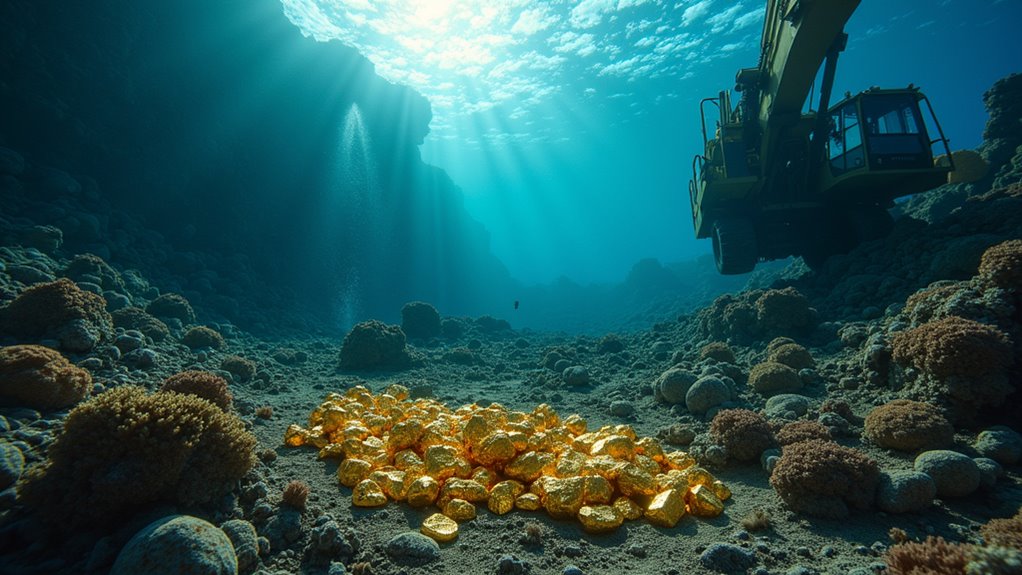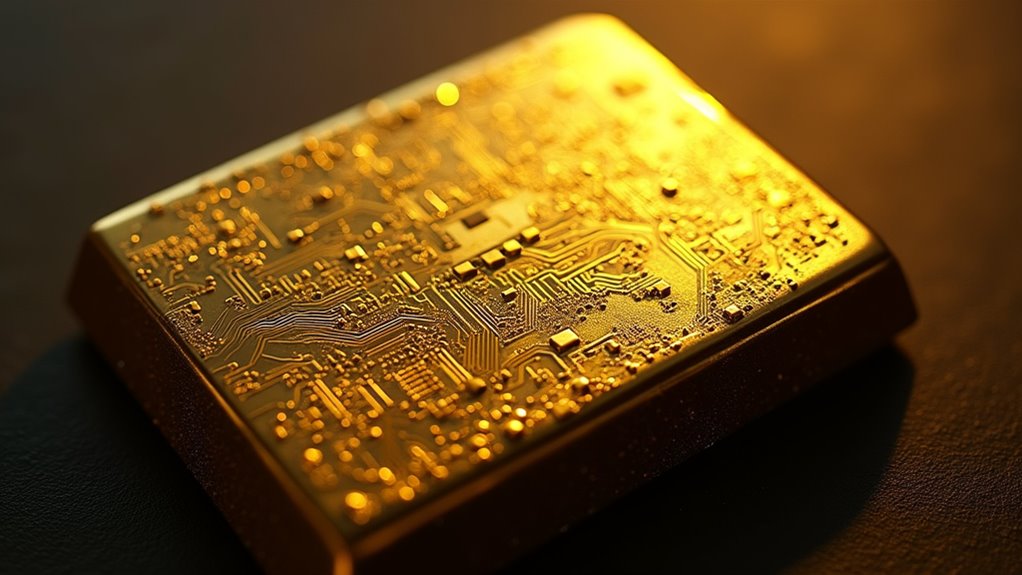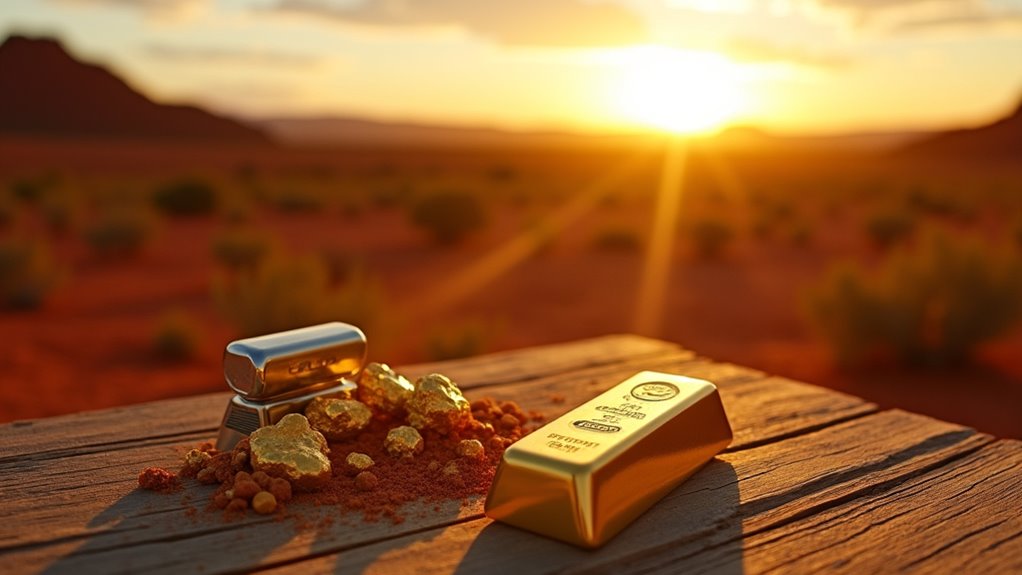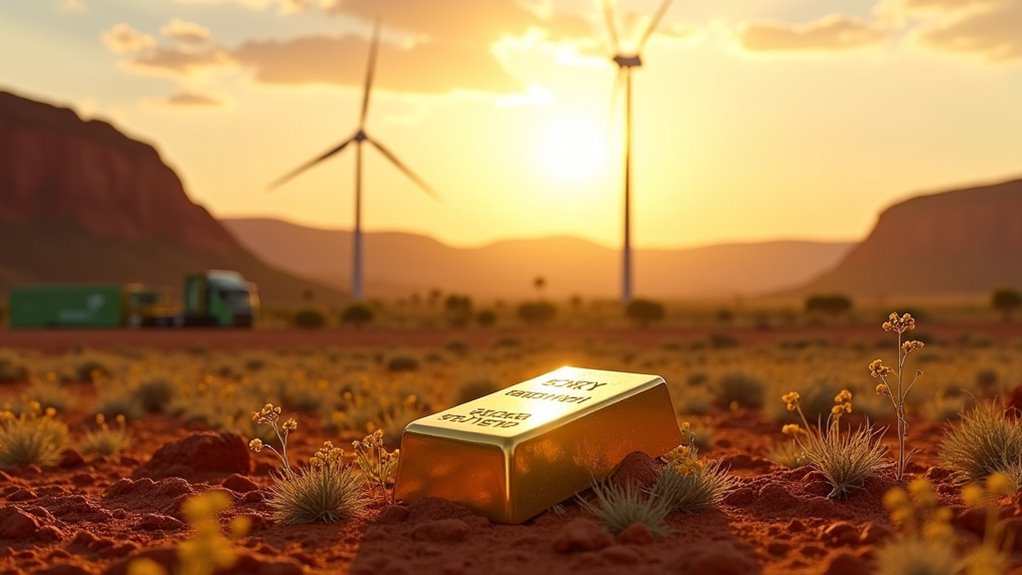Deep sea gold mining offers Australia immense economic opportunities, with potential revenues from critical minerals like gold and cobalt boosting GDP by billions. Yet, the environmental risks are stark—biodiversity loss, sediment plumes, and noise pollution threaten undiscovered marine life in our pristine waters. At Karat.au, we’re passionate about balancing this legacy with sustainability. The costs and viability remain uncertain, but steering through these challenges is essential. Stay with us to uncover more insights on this frontier.
Economic Prospects of Deep Sea Mining in Australia
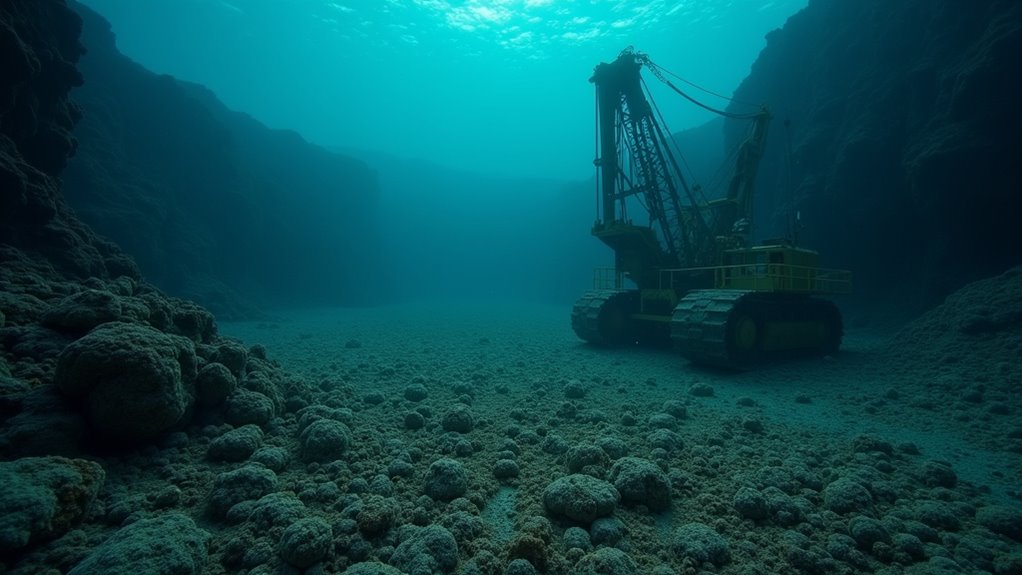
While the allure of gold has long defined Australia’s mining heritage, the untapped riches of deep sea mining present a bold new frontier for the nation’s economy. Vast polymetallic nodules and crusts on the seabed hold nickel, copper, cobalt, and lithium—minerals essential for EV batteries and renewable tech. Their global value could reach US$20 trillion, a staggering figure as terrestrial reserves dwindle. In addition, the demand for gold demand by sector highlights the diverse applications of gold across various industries, underscoring its continued relevance.
Australia, already a leader in land-based battery metals, stands to gain. With demand for critical minerals set to soar—think EV needs rising 30x by 2040—deep sea mining offers supply chain diversity. Additionally, the top ten gold reserves countries highlight the strategic importance of mineral wealth in shaping economic futures, as geopolitical factors can influence gold reserves management and trading strategies. The rise of gold production in various nations further emphasizes the competitive landscape that Australia must navigate.
Australian expertise in mining tech, plus companies like The Metals Company, positions the nation well. Projections suggest critical minerals could add A$170B to GDP by 2040.
Yet, profitability remains uncertain, with high costs looming. Still, the potential for revenue and jobs is hard to ignore, mate.
Environmental Challenges and Concerns for Australian Waters
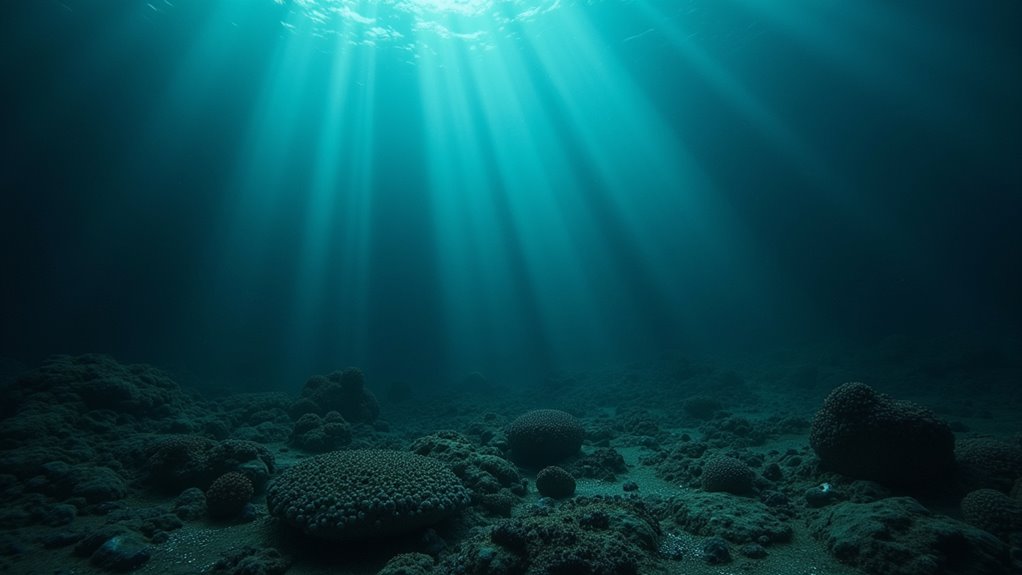
As Australia contemplates the riches of deep sea gold mining, the environmental stakes in its pristine waters loom just as large. The physical removal of seafloor habitats and ancient polymetallic nodules threatens irreversible biodiversity loss, with over 90% of deep-sea species potentially undiscovered. The land degradation associated with mining activities can mirror the destructive impacts seen in terrestrial environments. Additionally, the deforestation from gold mining operations in other regions serves as a stark reminder of the potential consequences if environmental precautions are not taken.
Sediment plumes from mining machinery could smother benthic organisms and disrupt pelagic species across vast areas, while noise and light pollution risk harming marine mammals like whales, masking their communication over millions of square kilometres. Furthermore, the use of mercury in gold mining can lead to serious health risks for both humans and wildlife, as it contaminates the environment and bioaccumulates in the food chain.
Moreover, the deep sea plays a crucial role in climate regulation, absorbing excess heat and CO2. Disturbing seafloor carbon sinks may hinder this capacity, with cascading effects on fisheries. Implementing sustainable practices in mining operations could help mitigate some of these environmental risks.
Knowledge gaps persist, and recovery could take millennia—nodules alone regrow over millions of years. At Karat.au, we’re passionate about Australia’s gold legacy, but caution that such environmental risks demand rigorous scrutiny before mining begins.
Frequently Asked Questions
What Technologies Are Used in Deep-Sea Mining?
Deep-sea mining relies on cutting-edge technologies for exploration and extraction.
Remotely Operated Vehicles (ROVs) and Autonomous Underwater Vehicles (AUVs) map the seabed with sonar and sensors, pinpointing mineral-rich zones.
Seafloor collectors, like tracked harvesters, gather deposits using hydraulic suction or robotic arms.
Riser pipes lift slurry to surface vessels, supported by dynamic positioning ships.
These innovations, tho complex, reveal vast underwater resources with precision and care.
How Does Australia Regulate Deep-Sea Mining?
Australia regulates deep-sea mining with a robust framework under the Offshore Minerals Act 1994, overseeing activities beyond three nautical miles from shore.
Licences for exploration and mining require Joint Authority approval, involving Federal and State or Territory Ministers.
Some regions, like New South Wales, have bans in coastal waters.
Internationally, Australia pushes for strict environmental rules via the ISA, ensuring marine protection before any deep-sea mining begins.
What International Laws Govern Seabed Mining?
International laws governing seabed mining are primarily shaped by the United Nations Convention on the Law of the Sea (UNCLOS) of 1982.
This framework declares the deep seabed as the “common heritage of mankind,” mandating environmental protection and equitable benefits for all nations.
The International Seabed Authority (ISA), based in Jamaica, oversees activities, crafting rules like the evolving “Mining Code” to balance progress with marine conservation.
How Does Mining Impact Pacific Island Communities?
Mining profoundly affects Pacific Island communities, disrupting their ocean-dependent livelihoods like fishing, which sustains both food security and cultural practices.
Environmental damage risks seafood contamination, threatening health, while spiritual ties to the sea face disturbance.
Social impacts, akin to land-based mining woes, loom large with inequitable benefits.
Karat.au notes, with a passion for integrity, that weak governance often exacerbates these issues, leaving locals vulnerable to external exploitation.
Crikey, that’s a worry!
What Jobs Could Deep-Sea Mining Create?
Deep-sea mining could reveal a wealth of job opportunities across various fields.
From robotics engineers designing underwater vehicles to environmental scientists safeguarding marine ecosystems, roles abound. Marine geologists map the ocean floor, while vessel crews support operations offshore.
Onshore, metallurgists refine minerals, and project managers oversee it all. These positions, steeped in innovation, highlight the industry’s potential to drive employment, blending technical skill with Australia’s proud mining heritage.
